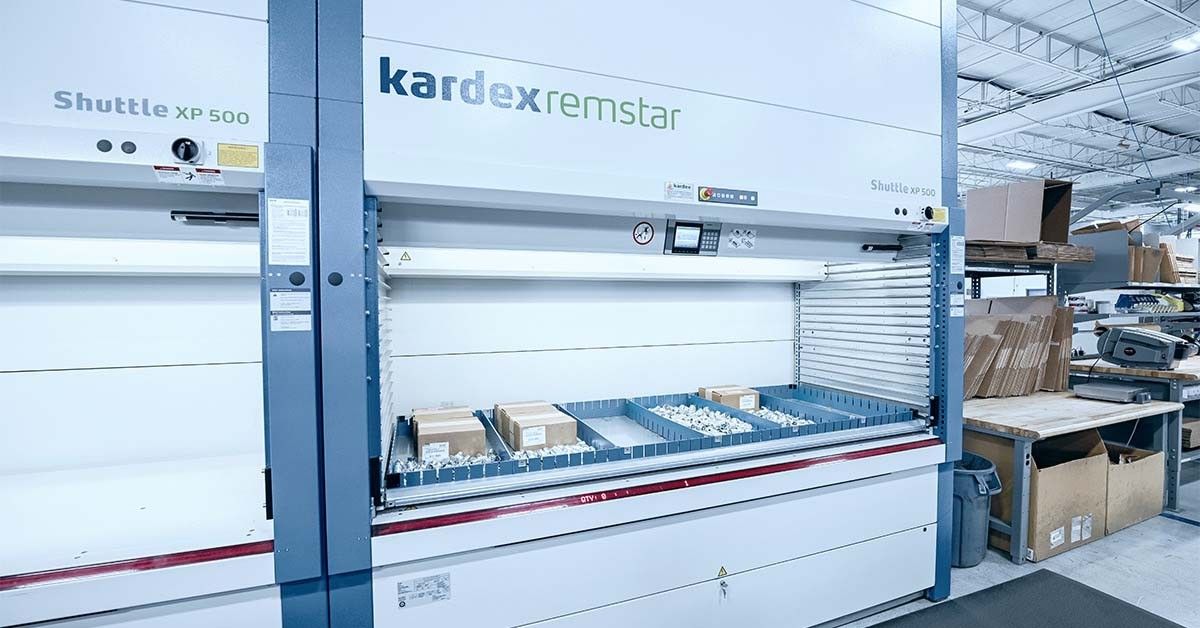Increasing order volumes and rising levels of on-hand inventory were creating big challenges for Bristol Hose, a Melrose Park, Illinois-based distributor that specializes in making hose assemblies for automotive, industrial, and commercial applications. The company’s Melrose Park facility doubles as a primary distribution center and storefront for over-the-counter sales—and as those order volumes grew, the facility’s manual picking and replenishment processes couldn’t keep up. Workers were constantly reshuffling bins and rearranging inventory to find the parts they needed, reducing the facility’s overall efficiency.
When company leaders decided to move to a larger facility to accommodate the growth, they also decided to make the leap to an automated storage and retrieval system (AS/RS) that would boost productivity, save space, and improve picking accuracy. They turned to Kardex Remstar and its shuttle-based storage and inventory management solution to get the job done.
MAXIMIZING SPACE
At 65,000 square feet, the new Melrose Park facility is more than double the size of Bristol Hose’s previous location—but company leaders were still intent on making the most of the additional space. The old facility used static shelving to store products, with workers walking the warehouse aisles to pick needed items. The new space features Kardex’s vertical lift modules (VLMs) and its Power Pick inventory management software.
The Kardex VLM is an enclosed, shelf-based storage system that takes advantage of ceiling height and is designed to increase capacity in a compact footprint. The goods-to-person system boosts productivity by delivering goods directly to the worker; a centralized elevator runs vertically within the system, retrieving trays of products and presenting them at a workstation, where workers then pick the items needed for an order. The Power Pick software optimizes the storage and retrieval of all of the items in the system.
Prior to installing the new system, Bristol Hose used about half its floor space for storage. Today, 85% of its products have been consolidated into the facility’s three VLMs, which take up just 1,200 square feet of space—1.5% of the total available floor space. The 15% of items not stored in the VLMs are fast-movers for over-the-counter sales; those items are stored in flow racking near the facility’s customer service counter.
Overall, Bristol Hose has achieved a net floor space reduction of 90%, according to the companies.
“Before, we had work cells that were [situated] clear across the warehouse, and we couldn’t see the [workers],” Tony Tuminaro, Bristol Hose’s director of operations, said in a statement describing the project. “Now we have those centralized, and everybody is within eyesight of each other, and everything is logically put together. The warehouse has a directional flow. Parts come in the dock, go into the back of the Kardex shuttle zone, get picked from the front of the Kardex shuttle zone, and finally [are] sent on to shipping and receiving.”
SAVING LABOR, INCREASING ACCURACY
The new system is also helping boost labor efficiency and improve order accuracy. Tuminaro says the facility has seen a 30% increase in productivity since implementing the VLMs.
“Before Kardex, we had three people constantly picking orders every minute of their shift. Now our pickers are done picking by 3 o’clock, and they have time for other tasks—such as general equipment maintenance in the shop or auditing production and assemblies. The VLMs have made our existing employees more efficient and [have kept] us from having to hire more people.”
Picking errors have been drastically reduced as well, thanks to the automation.
“[Now] we go six months without an error, just because inventory is where it’s supposed to be. It’s very rare that I see errors anymore,” Tuminaro said.















